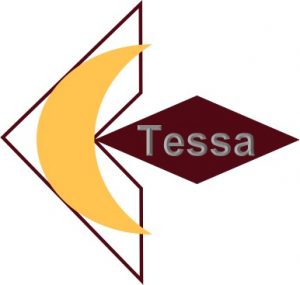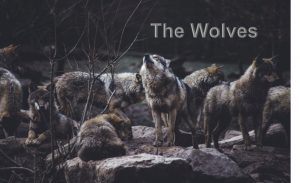For our group inquiry, Denee, Dane, Jessica, and I looked at using Apps in Outdoor Education.
Here is a screencast of our slides! Feel free to pause and look at the slides as you go!
Tessa Webb
For our group inquiry, Denee, Dane, Jessica, and I looked at using Apps in Outdoor Education.
Here is a screencast of our slides! Feel free to pause and look at the slides as you go!
Pottery is a huge world. Which before this I didn’t know. I thought it was a fun hobby people had and spent some time on making beautiful and useful things. It takes a lot of time, mental and physical effort, money, learning, understanding, and practice.
I have learned that I didn’t have the time this semester to become a full time pottery as I previously thought I would. That is ok I will come back to it when I have the space to do so because something else I learned is that….
I love pottery.
It is a very human practice, looking at the history of it, I learned it is an art practiced for thousands of years – the oldest pottery shard humans know exist is 20,000 years old. Clay is what we were made of, according to many different creation stories. It is an art that incorporates the four elements earth, water, air, and fire, which are the elements that for a long time what we were said to be as humans.
 The oldest pottery shard, found in China’s Jiangxi province that has been dated to be 20,000 years old. Read more.
The oldest pottery shard, found in China’s Jiangxi province that has been dated to be 20,000 years old. Read more.
Some of the key activities and terms that are specific to the art of pottery that I learned during my inquiry in pottery are:
The technology used for pottery has been around forever and has never changed. The pottery wheel and the Kiln are still necessary today to practice this art. Though the wheel has changed from being hand-spun to electrical, and kilns have gotten bigger and more industrialized.
Technology has helped me learn about pottery, whilst I didn’t have the time to go into the studio and practice. Being able to watch youtube videos, tv programs, look information up on the internet and read books was invaluable to my learning throughout this process.
FreshGrade (Sam, Mitra, Jess S.)
Includes
FreshGrade & FreshGrade NEXT
Features
bobka – Anne
Google Teacher
OpenED!
Presentations
Technology in the Classroom !
Language and language technologies in the Classroom
Digital Storytelling
Video in the classroom
Coding
A couple websites to learn about code!
Code Monkey (for young learners)
Looking for ways to learn to code without being on a computer? look at Coding Unplugged.
Challenge
The Fun they had by Isaac Asimov
Guest Speaker – Verena Roberts
Open Learning Design Intervention
Design for learning – teacher job to create access
Learning is learning, doesn’t matter the name
Formal learning theorists: Vygotsky, Dewey, Barth, Scardamalia & Bereiter
Informal: other teachers, environment
Personal Learning environments
Interactions – Collaboration – Connections (outcomes, objectives, competencies)
Reflective
OLDI
Scaffolding has to happen slowly and be very intentional :
Learning Plan #1 – searching and communicating online
LP #2 – who is my online audience?
LP#3 – How do I solve community Problem?
LP #4 – What it my story based on? What is my perspective? How does my story inform my identity?
It was good to see the struggle-in-action of using technology. I think that it’s really important to really prepare and have pretested your system of communication if using technology. I will always prepare for the worst-case scenario when using technology. Just to know that my back-up pathways will work. and if all goes perfectly that’s great. I just would want to be prepared for any potential technological issue.
Presentations
OpenEd Resources – Hannah and Ruth
commonsense.org education
Integrating Technology in the Classroom – Anna, Sydney, and Kathleen
Using technology needs to be appropriately, meaningful and empowering.
Question use of technology; screening content – what is being accessed/age appropriateness/its the world but in a tiny mirror so rules and boundaries need to be discussed and held.
Is a supportive tool – use it only when it enhances activities.
3D design & printing – Nick & Jamie
amazing applications for biology, chemistry, any science topic really, math, design, and story telling!
Keiro’s presentation – stop-go animation
stop motion (can be downloaded)
used imovie to fade into the graphic
Photo shop
Pros
Cons
Things to watch for
REsources
Google Geographic Products
Google Maps
Google Earth
Lesson Ideas
Lessons – My Maps
Privacy
cartography has nationalism built into it. Originally the way that countries were delineated.
Digital Literacy
Information Literacy
Ethical use
Understanding digital footprint
Protecting yourself online
Handling digital communication – cyberbullying
Pros & Cons
Risks
Strategies, Tips, and Best Practice
Parents and Dig Lit
Sex, sexuality and the digital world
House hippo – media smarts
Good Morning November!
SD 63 strike
Indigenous Resurgence Workshop (Saturday November 23) – Sign-up through link on EDSA face book page.
MINECRAFT
Popularity of minecraft has increased of late.
kids share IP addresses to connect to play minecraft
Entire city of Florence replicated in the minecraft world.
(take a screenshot or video – screencastify)
Minecraft requires a minecraft server (what is this?) – costs ~5000$.
Microsoft bought minecraft from Mojang, and the server was changed, so now don’t have
MInecraft can relate to a number of subject areas, sorts of projects, and core competencies:
Verdict: Minecraft is cool.
On Monday, October 21 our ED 336 class went to Rebecca Bathurst-Hunt’s class to have a look at her classroom set-up and speak with her about how she implements inquiry learning into her public school classroom. Rebecca Bathhurst-Hunt and Trevor Mckenzie co-authored a book in 2018 titled Inquiry Mindset, a book designed to help teachers encourage “dreams, wonders, and curiosities in young learners”.

I was unfortunately unable to attend the classroom tour but have been working my way through her website and the multitude of other resources that have been provided by my fellow classmates and Michael, who recorded the audio of her talk and has posted it on our classroom website!
I am so inspired by Rebecca and her implementation of Inquiry based learning into her classroom practice.
I have been delving into the world of Youtube videos to aid me with my pottery techniques.
Here are a few I have found that have provided important and useful information to achieve more efficient and functional technical skills for some of the following: throwing, centering, pulling, how to use a rib, trimming and how to make a handle. A big, huge THANKS to these amazing people who are willing to film and edit and share their knowledge via youtube!
Centering – This video addresses some of the issues you may encounter as a beginner when centerring clay
How to Make a Bowl – Useful demonstration of pulling and how to use a rib
Trimming and handle making! – gets very advanced at the end, but also very inspired!
Jesse Miller Recap
The use of information that technology users provide is often used for another purpose.
Important to remember that technology is embedded in our colonial, patriarchal, capitalist society and to use with caution.
Pacific School of Innovation and Inquiry Recap
I wonder if having a deep dive into Inquiry before we do an inquiry would be helpful? A very useful question posed by Katrina
Inquiry definition – in the reading, first time seen, as people who are all grown in a scholastic environment of tests, assignments, products, and grades this is really uncomfortable.
Book recommendation
Inquiry can be a meaningful way of incorporating Indigenous People’s Principles into learning.
Some words we used to describe the students at PSII were:
empowerment, eloquence, courage, enthusiasm, inventiveness, variety of skills, depth of knowledge
Rebecca Bathhurst-Hunt
Using Inquiry in the classroom – Great ideas start with a Question, Wonderwall
Trello
Trello is a collaboration tool that organizes projects into boards.
App on phone
Good for keeping inquiries or ideas organized.
Screencastify
Notion – similar options
Graphics
Pixels – dots
Vectors – how computer stores information, can change size, has clear crisp lines. mathematically based, so just grows as size increased or decreased.
Graphic creation options: browser based – easy access for students/learners and often free or open source.
GIMP – often used, tries to replicate photoshop, but just slightly more annoying
Pixlr – right in browser.
Powerpoint


Apps
Screenshots
Prisma – filters
Mirror Lab
Comica – turn photos into comic strips
https://bryanmmathers.com/ – Visual Thinkery
https://remixer.visualthinkery.com/
© 2025 A Teacher Education Journey
Theme by Anders Noren — Up ↑
Recent Comments